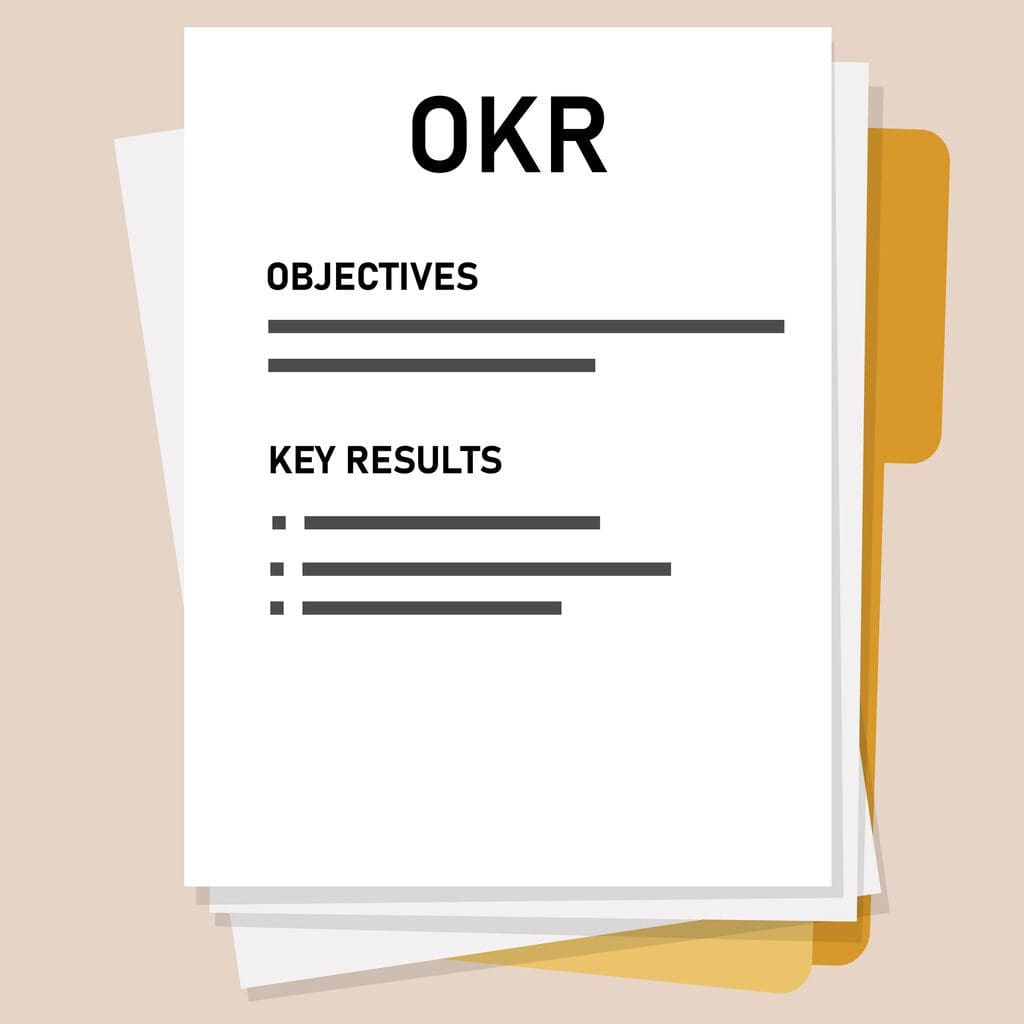Table of Contents
How to Implement OKR in Your Organization Effectively?
Objectives and Key Results (OKR) is a methodology that helps businesses set and achieve their goals. John Doerr, an investor in companies like Google and Intel, popularised this framework. Today, many organisations have adopted OKRs to improve their goal-setting process and achieve better results. After reading this article, you will learn how to deploy OKR successfully in your company.
Introduction to Objectives and Key Results (OKR)
Objectives and Key Results (OKR) is a goal-setting framework that helps companies define and track their goals. It is a simple yet powerful methodology that consists of two parts: Objectives and Key Results.


Objectives are the goals a company wants to achieve, and Key Results are the measurable outcomes that will indicate the progress towards those goals.
OKRs are used by many successful companies, including Google, Intel, and LinkedIn, to name a few. The main advantage of OKRs is that they provide a clear direction for the company, aligning all teams and individuals towards the same goals.
Benefits of Implementing OKRs in Your Organisation
Implementing OKRs in your organisation has many benefits. Here are a few of them:
1. Clear goals and direction:
OKRs provide a clear direction for the company, aligning all teams and individuals towards the same goals.
2. Improved communication and collaboration:
OKRs encourage communication and collaboration between teams, as everyone is working towards the same goals.
3. Increased motivation and engagement:
OKRs give employees a sense of purpose and direction, which can increase their motivation and engagement at work.
4. Better focus and prioritisation:
OKRs help companies prioritise their goals and focus on what is most important, leading to better results.
5. Continuous improvement:
OKRs are reviewed regularly, allowing companies to adapt and improve their goals over time.
Understanding the OKR Framework
Before implementing OKRs in your organisation, it is essential to understand the framework. The OKR framework consists of three parts:
1. Objectives:
Objectives are the specific goals that a company wants to achieve. They should be ambitious, qualitative, and inspiring. Objectives should be aligned with the company’s vision and mission.
2. Key Results:
Key Results are the measurable outcomes that will indicate the progress towards the objectives. They should be specific, measurable, and time-bound. Key Results should be challenging but achievable.
3. Scorecard:
The scorecard is used to track the progress towards the objectives and key results. It should be updated regularly and shared with all relevant stakeholders.
Developing an OKR Cycle
The OKR cycle consists of four stages:
1. Planning:
In this stage, the company sets its objectives and key results for the upcoming quarter or year.
2. Execution:
In this stage, the company works towards achieving its objectives and key results.
3. Review:
In this stage, the company reviews its progress towards the objectives and key results and makes any necessary adjustments.
4. Retrospective:
In this stage, the company reflects on the OKR cycle and identifies areas for improvement.
Setting Company-Level Objectives and Key Results
The first step in implementing OKRs in your organisation is to set company-level objectives and key results. These objectives should align with the company’s vision and mission and be challenging but achievable.
The company should involve all relevant stakeholders, including the leadership team and department heads, to set objectives and key results. Ensuring everyone is on board with the process and aware of the advantages of OKRs is crucial.


Setting Team-Level Objectives and Key Results
Once the company-level objectives and key results are set, the next step is to set team-level objectives and key results. These objectives should be aligned with the company-level objectives and specific to each team’s responsibilities.
It is important to involve team members in the goal-setting process to ensure they understand the objectives and key results and are committed to achieving them.
Defining Measurable Key Results
One of the most critical aspects of OKRs is defining measurable key results. Key results should be specific, measurable, and time-bound. They should provide a clear indication of progress towards the objectives.
When defining measurable key results, it is important to ensure they are achievable but challenging. Important outcomes must be supported by evidence, and their applicability and viability ought to be periodically assessed.
Reviewing and Adapting Your OKRs Process
Once the OKRs are set, reviewing and adapting the process regularly is essential. Regular reviews help identify areas for improvement and ensure that the company is on track towards achieving its goals.
It is crucial to involve all pertinent parties in the review process and to be receptive to criticism and ideas for improvement. Regular reviews help ensure the company continually improves and adapts to changing circumstances.
Adopting OKRs Across Your Organisation
It is crucial to implement OKRs throughout your firm if you want to make sure they are successful. All pertinent stakeholders must be informed of the advantages of OKRs for everyone to support the process.
It is important to provide training and support to team members to ensure they understand the OKR methodology and know how to set and achieve their goals.
Utilising OKR Software for Effective Goal Management
OKR software can be a valuable tool for effective goal management. OKR software can help companies set, track, and review their objectives and key results, making the process more efficient and effective.
When choosing OKR software, it is important to ensure that it is user-friendly, customisable, and integrates with other tools and systems used by the company.
Tips for Successfully Implementing OKRs in Your Organization
Here are a few tips for successfully implementing OKRs in your organisation:
- Involve all relevant stakeholders in the goal-setting process.
- Ensure that everyone understands the benefits of OKRs.
- Provide training and support to team members.
- Regularly review and adapt the OKR process.
- Use OKR software for effective goal management.


Conclusion: Achieving Your Goals with OKRs
Implementing OKRs in your organisation can help you achieve your goals more effectively. By implementing the OKR technique and the methods provided in this article, you can give a clear direction for your company, improve communication and collaboration between teams, and achieve better results.
Remember to involve all relevant stakeholders in the process, regularly review and adapt the OKR process, and provide training and support to team members. With these tips and the right mindset, you can successfully implement OKRs in your organisation and achieve your goals.
Sign up for free to execute your goal-planning strategies starting today!



